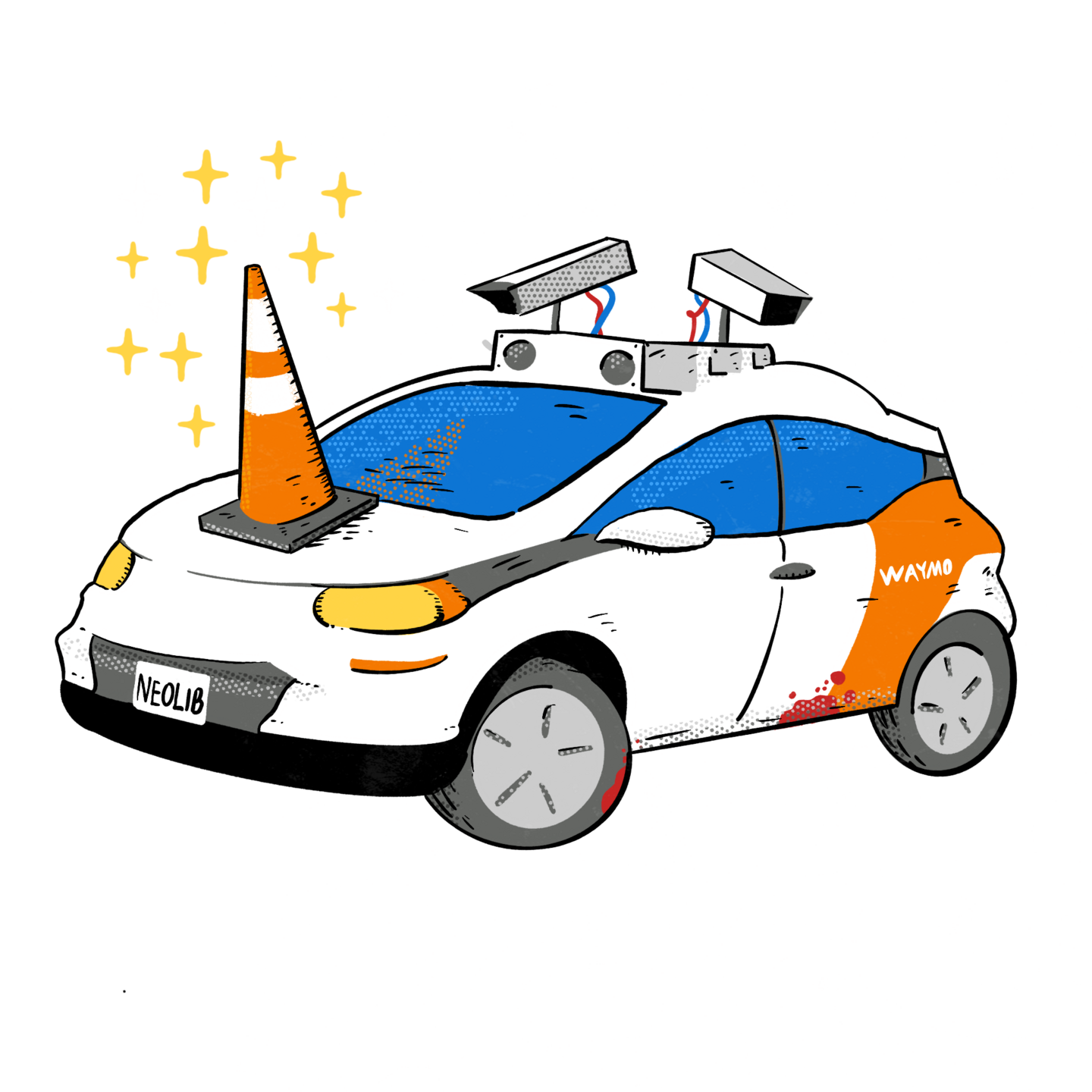
Wall Street Journal – Waymo Driverless Taxis Become Protesters’ New Favorite Target
Robot-operated electric vehicles are summoned to downtown Los Angeles and set alight
See original article by Sean McLain and Katherine Blunt at WSJ
A visible emblem of ire has emerged from the protests in Los Angeles: graffitied, burning Waymos.
Vandalism and torched cars are a hallmark of many riots, and Los Angeles is no exception. In 2020, protesters defaced and burned police cars as protests over the death of George Floyd in police custody turned violent. Now electric, driverless vehicles have been summoned to protest scenes via the Waymo app. The resulting EV fires burn hotter than traditional car fires and are potentially more hazardous.
The autonomous robot taxis owned by Google parent company Alphabet were tagged with protest slogans and profanity—and set on fire—as a way to disrupt traffic over the weekend and demonstrate against the widespread roundup of migrants by Immigration and Customs Enforcement officers. Waymo said Monday that it has restricted travel for the autonomous vehicles so they won’t be able to travel to downtown Los Angeles, but the fleet continues to serve other parts of the city.
A check of the Waymo app showed the EVs may be restricted in a more widespread way. No rides were available Monday morning from West Los Angeles to the Crypto.com Arena or the University of Southern California, two areas located several miles from the protests.
Even before the protests escalated over the weekend, Waymo vehicles had been targeted by vandals. In Santa Monica, Calif., orange traffic cones were placed outside a depot where the vehicles are cleaned and recharged, preventing them from entering the area, according to local media reports. Waymos have angered some residents who live near charging stations because the cars can make a noise while backing up, much like delivery vans do, and in some cases, Waymos parked in lots have started to honk at each other.
Waymo EVs can be called up on a mobile-phone app to areas a human driver might not be willing to go. The cars can be spray-painted, set on fire or pummeled until glass breaks without the possibility of hurting a human driver. But EVs that are set on fire burn hotter and longer than traditional cars because they run on lithium-ion batteries.
EV batteries contain flammable chemicals and can release their own oxygen as they burn, allowing EV fires to reignite hours or even days after they appear to be extinguished. That makes them a bigger threat to their surrounding area than traditional car fires, and EV battery fires can also release toxic fumes that are hazardous to humans.

The remnants of Waymos set on fire during protests in downtown Los Angeles. Photo: Ben Fritz/WSJ
Firefighters who are called to put out flaming electric vehicles find that the surest approach is to stand back and “let it burn,” Fire Marshal Andy King of Franklin, Tenn., told The Wall Street Journal in 2023.
The Waymo vehicles on the road in Los Angeles are Jaguar I-PACE EVs, with a starting price tag of around $73,000. They are equipped with an array of cameras, radar and lidar—a detection system akin to radar that uses a laser—as well as a sophisticated computer system. The total price tag was estimated in 2024 to be between $150,000 and $200,000.
Waymo wouldn’t comment on how much its vehicles cost or quantify how much damage has been done to its fleet of 300 EVs in Los Angeles.
See original article by Sean McLain and Katherine Blunt at WSJ
